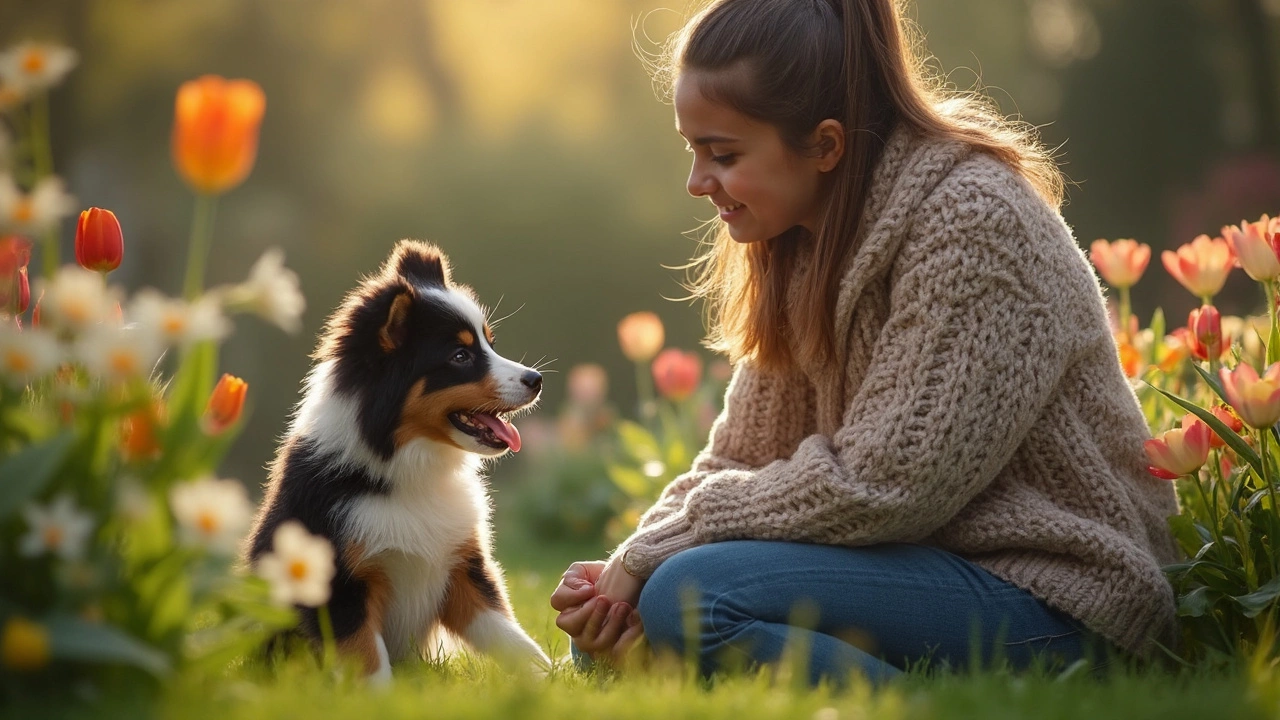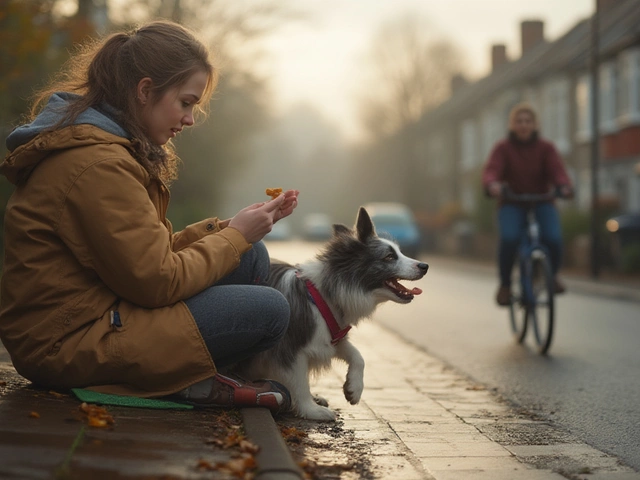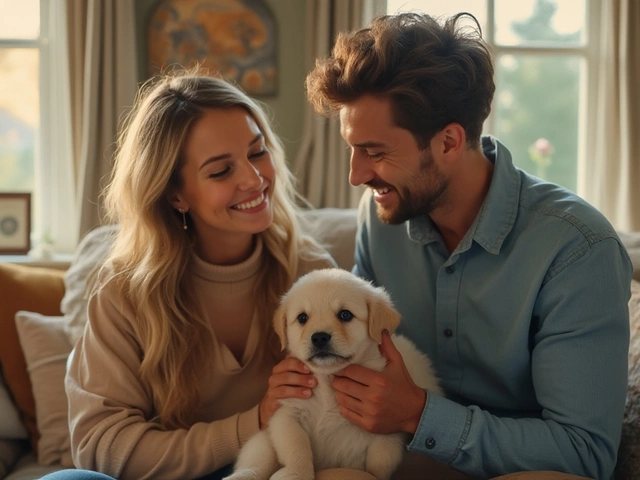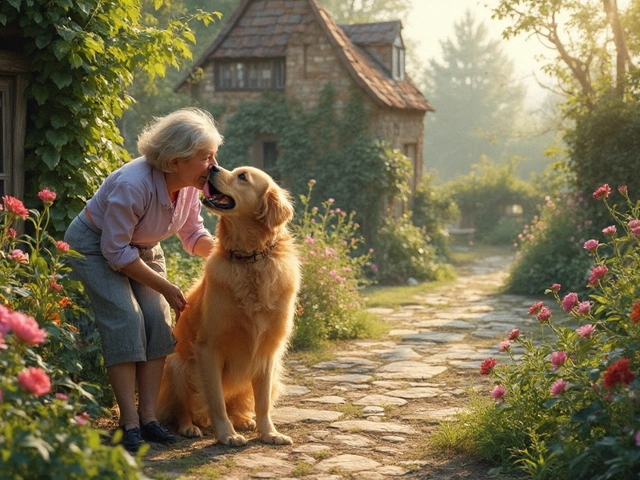Ever wonder when's the best time to start training your dog? It's a question that stumps new and experienced pet owners alike. The truth is, there's no one-size-fits-all answer, but there are some guidelines that can help.
Puppies are little learning sponges, and many trainers suggest starting basic training as early as eight weeks old. That might seem young, but their brains are booming with development at this stage, making them super receptive to picking up new skills. Think of it like they're in the toddler phase, eagerly learning their first words and actions.
What about those lovable older dogs? Contrary to the old saying, they can indeed learn new tricks–it just takes a bit more time and patience. Their habits might be a bit more ingrained, but with consistency, they're fully capable of learning and changing behaviors. Whether you're starting with a pup or an older pooch, diving into their world early can set the foundation for a well-behaved companion.
- Understanding Puppy Brains
- The Perfect Age to Start
- Training Older Dogs
- Key Training Techniques
- Tips for Success
Understanding Puppy Brains
Puppies are the equivalent of little four-legged sponges, absorbing everything around them. Early brain development is crucial since it sets the stage for their adult behavior. Between the age of 3-12 weeks, puppies are in their “socialization period,” which is the perfect time to introduce them to various environments, people, and other animals.
Brain Development Stage
At about 3 weeks old, a puppy's ears open up, and by 4 weeks, they're seeing the world with more clarity as their eyes mature. This marks the start of their rapid brain growth, making the following weeks a critical time for learning and social skills. They're forming crucial neural connections, which highlights why this is a great time to start puppy training.
The Importance of Early Experiences
Experiences during this age can have a long-lasting impact. Positive exposures help puppies become confident and well-adjusted adult dogs. On the flip side, negative experiences might instill fear or anxiety, which can be hard to reverse. This period is all about creating positive associations.
Play and Learning
Playing is not just fun for puppies, it’s an essential part of their learning. Games involving problem-solving and gentle competition help boost their cognitive skills. This is particularly true with toy-based training where your puppy learns commands like ‘fetch’ and ‘drop.’
Puppy Training Tips
- Start with basic command training like ‘sit’ and ‘stay’ using treats and praise as rewards.
- Always use positive reinforcement—puppies respond better to rewards rather than punishment.
- Introduce them to different noises, surfaces, and new experiences in a controlled manner.
- Keep training sessions short to match their short attention spans.
- Ensure socialization with humans and other dogs to build social skills.
Investing time in understanding and nurturing that little developing brain can lead to a lifetime of companionship with a well-behaved dog. Remember, it's not just about teaching them tricks; it's about setting a foundation for a healthy and happy life.
The Perfect Age to Start
Deciding when to start dog training can feel like guessing the right moment to board a train—you don't want to jump on too late or too soon. So what's the sweet spot? Turns out, starting around eight weeks is usually ideal because puppies are open books, ready to soak up knowledge like little sponges.
Puppy Development
Why eight weeks, you ask? At this age, puppies are still in their critical socialization period, which is a fancy way of saying they're extra curious and eager to learn about the world. This makes it a prime opportunity to introduce basic commands like 'sit', 'stay', and 'come'. Plus, because they're naturally more adaptable, they can pick up positive behaviors faster.
The Learning Environment
When beginning training at this age, focus on creating a positive learning experience. Reward-based methods work wonders; think treats, praise, and a whole lot of enthusiasm. Keep sessions short—just 5 to 10 minutes because puppies, like toddlers, have the attention span of a goldfish.
Check this out: The University of Veterinary Medicine did a study that found puppies trained with positive reinforcement showed better performance and stronger bonding with their owners compared to those who didn't. That's a scientific stamp of approval right there!
Older Pooches
For those of you with older dogs, don't fret. While their prime learning period might have passed, they're always capable of growth. You might have to combat some ingrained habits, but with patience, consistency, and positivity, they can learn just as well.
In short, start early if you can, but remember—it's never too late to teach an old dog new tricks. It's all about understanding your dog's behavior and adjusting your approach to meet them where they're at.
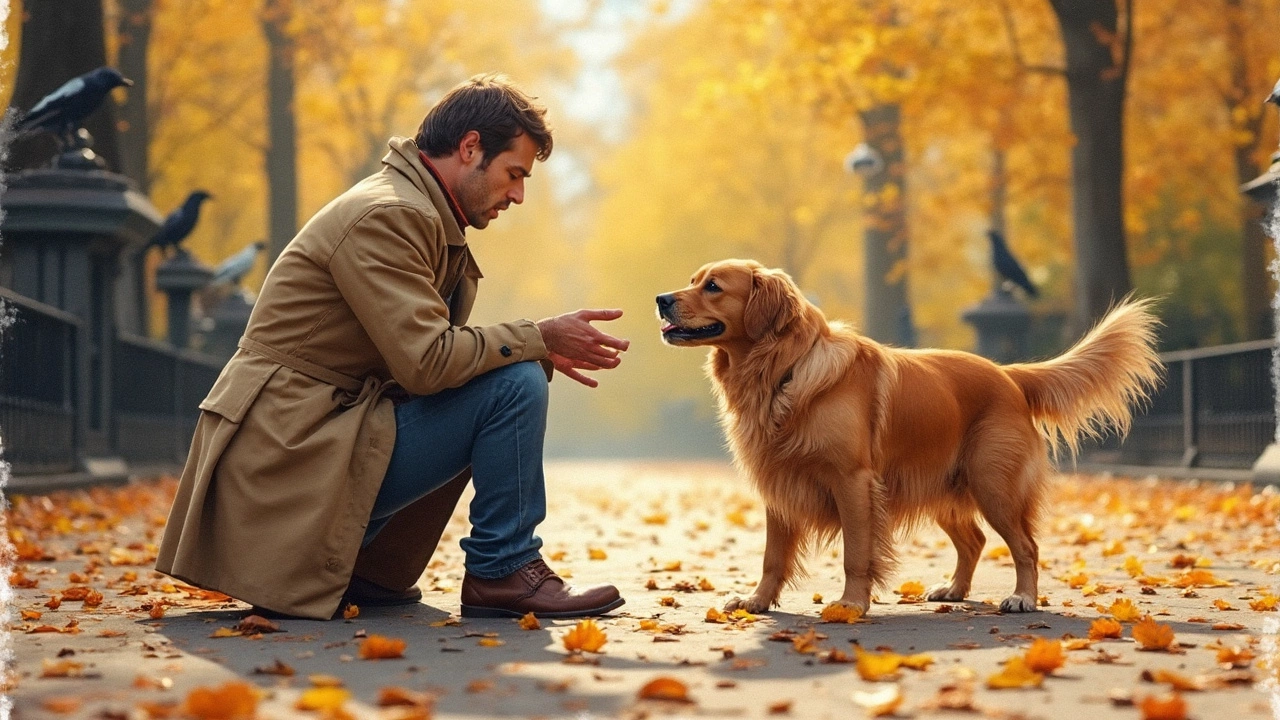
Training Older Dogs
So, you've got an older dog and you're wondering if they've missed the dog training boat? Not at all! Older dogs are just as capable of learning as their younger counterparts. It may take a little more patience, but with the right approach, your senior pooch can pick up new tricks and behaviors.
The Basics of Training an Older Dog
First thing's first, understand that older dogs may come with a set of ingrained habits. The good news is those can be changed. Start with understanding their history, if possible. Did they receive any training before? Knowing this can help tailor your approach.
Another crucial tip: make it fun. Dogs of all ages respond well to positive reinforcement. Use treats, play, or even a good belly rub to reward them for good behavior. Remember, consistency is key. Try to keep training sessions short and sweet, focusing on one behavior or trick at a time.
Challenges and Tips
Older dogs might face challenges like reduced energy or even age-related issues like arthritis, which can affect how they respond to training. Be mindful of their physical limits and adjust exercises as needed.
- Patience and Consistency: Stick to a schedule. Consistent training times help older dogs feel secure and know what to expect.
- Positive Reinforcements: Use treats, but keep in mind their diet needs to avoid unnecessary weight gain.
- Adapt to Their Pace: Older dogs may need a little more time to grasp new tricks, but they appreciate the accomplishment just as much.
And if you ever feel like you're not making progress, don't hesitate to consult a professional trainer. They can offer tailored strategies and give any dog behavior advice that's backed by experience.
Stats on Older Dogs
| Age Group | Training Success Rate |
|---|---|
| 1-5 years | 85% |
| 5-10 years | 70% |
| 10+ years | 65% |
As these numbers show, training older dogs may have slightly lower success rates, but the odds are definitely not against you. With a bit of effort, your older furry friend can learn and thrive just like any young pup.
Key Training Techniques
Diving into the world of dog training can feel overwhelming, but breaking it down into key techniques makes it a whole lot easier. Whether you're working with a playful puppy or a wise senior, there are some tried-and-true methods you can count on.
Start with Basic Commands
Teaching basic commands like 'sit', 'stay', 'come', and 'down' is the foundation of any training regime. These commands not only build obedience but also help in communicating with your pup clearly.
- Consistency is Key: Use the same word and hand gestures for each command.
- Positive Reinforcement: Reward your dog with treats or praise when they follow a command. Dogs crave positive feedback.
- Keep Sessions Short: Aim for 5-10 minute training sessions to keep your pup engaged without being bored.
Socialization
Getting your dog comfortable with different environments, people, and other animals is crucial. It's said that socialization should occur between weeks 3 and 14 for puppies, but don't fret; older dogs can and should be socialized too!
Crate Training
Crate training helps with housebreaking and provides your dog with a safe place. According to the American Kennel Club, "A crate can give dogs a sense of security when used properly."
Start by letting your dog explore the crate at their leisure. Gradually encourage them to stay inside for longer periods, always associate the crate with positive experiences.
"The focus should be on rewarding positive behaviors instead of punishing bad ones." — Cesar Millan
Clicker Training
This method uses a clicker to mark a positive behavior, followed by a treat. Dogs quickly learn that the click means they've done something right. It’s a great way to get their attention.
Remember, patience and consistency go a long way. These techniques might take time, but with each successful command, you'll be reinforcing a lifetime of good behavior in your furry friend.
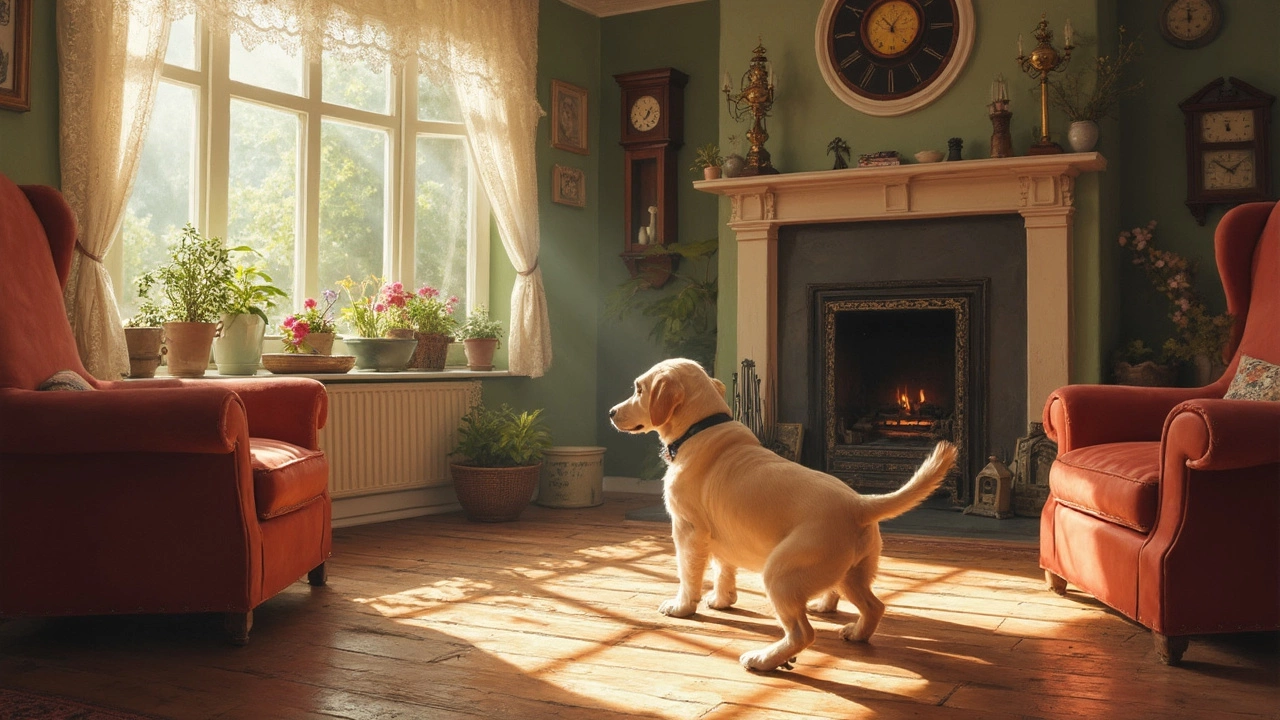
Tips for Success
Training your dog is a journey, not a sprint. To make the most out of your dog training efforts, here are some tried-and-true tips that can save you time and frustration.
Consistency is Key
Whether you're working with a puppy or an older dog, being consistent in your training commands and routine is crucial. Use the same words and gestures for each command so your dog doesn't get confused. Establish a regular training schedule to reinforce learning.
Short and Sweet Sessions
Dogs, like humans, have attention spans. Puppies, in particular, do best with short training sessions—around 5-10 minutes a couple of times a day. Keep it engaging and fun to hold their interest. Imagine trying to sit through an hour-long lecture as a toddler, it's just not gonna happen!
Positive Reinforcement Works Wonders
Reward-based training is one of the most effective ways to teach your dog. Use treats, affection, or playtime as rewards when your dog successfully follows a command. It makes them more likely to repeat behaviors that earn them these positive outcomes.
Patience and Understanding
Remember, every dog learns at its own pace. If your dog doesn't catch on right away, don't be discouraged. Stay patient and keep practicing. Dogs can sense frustration, which can impede their learning.
The Role of Socialization
Early socialization plays a huge part in a dog’s overall behavior and temperament. Expose your dog to various environments, people, and other animals, starting at a young age. This helps in creating a well-adjusted and friendly companion.
Here's a quick breakdown of common training timelines:
| Age | Focus Area |
|---|---|
| 8-12 weeks | Basic commands and socialization |
| 3-6 months | House training |
| 6 months+ | Advanced tricks and recall skills |
Ultimately, the relationship you build with your dog through training is what matters most. Whether it’s mastering a dog behavior trick or just learning to sit patiently, each step strengthens your bond.

